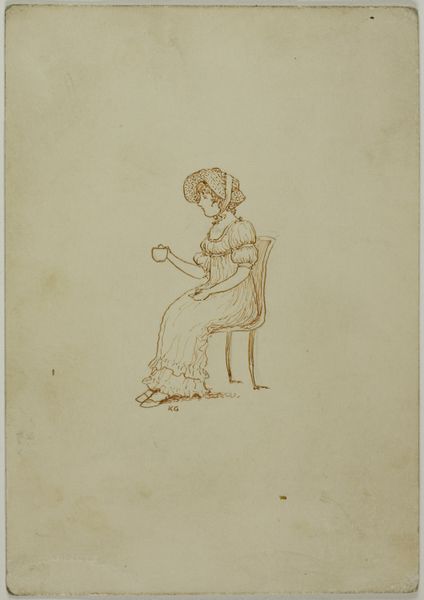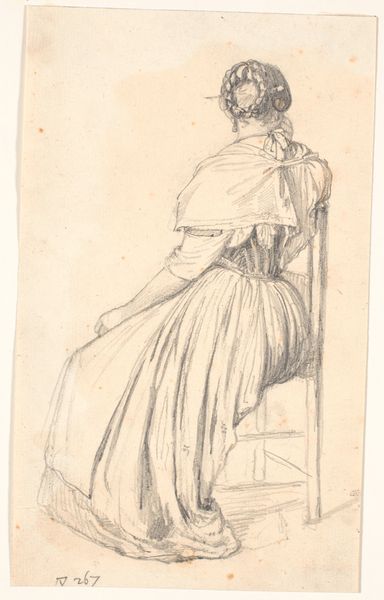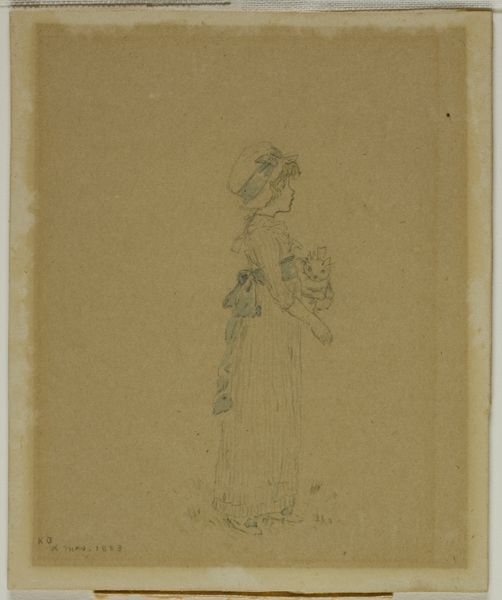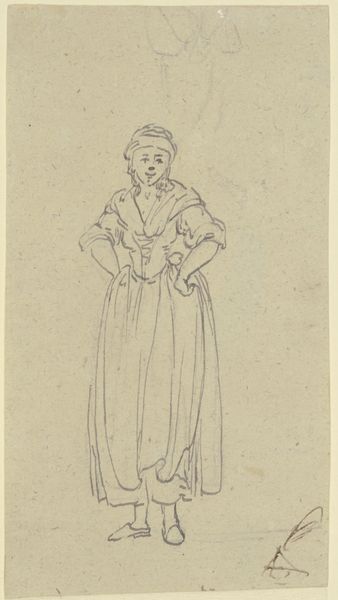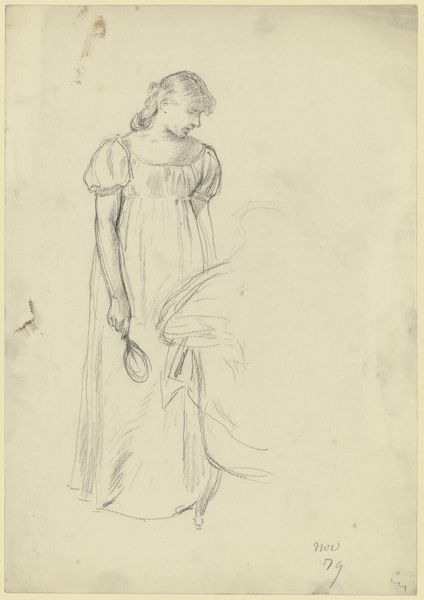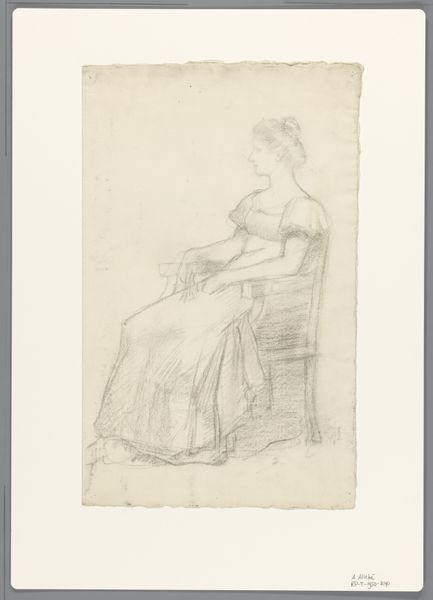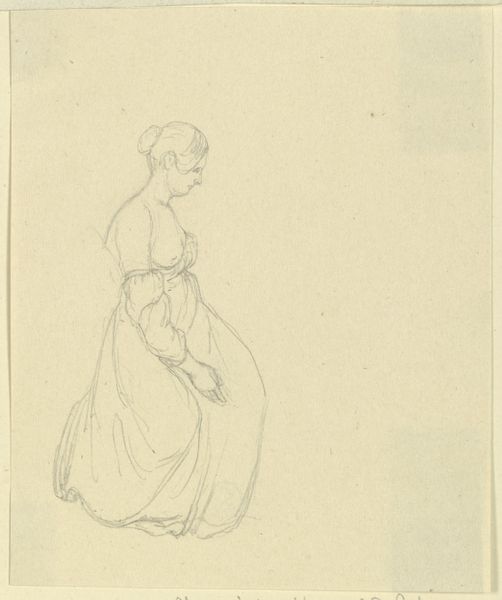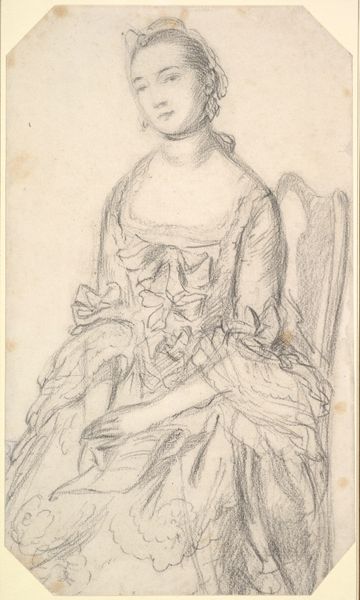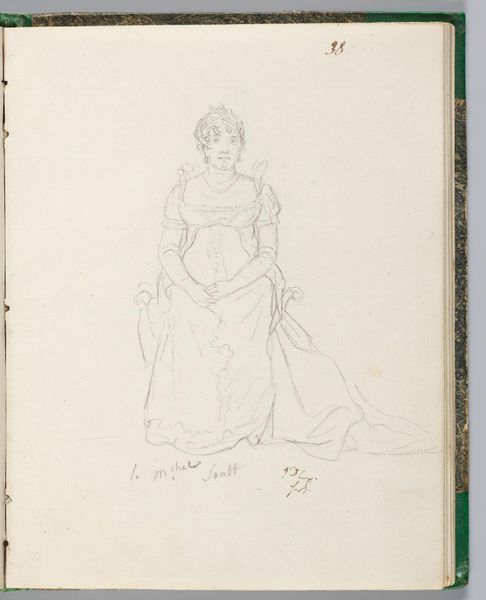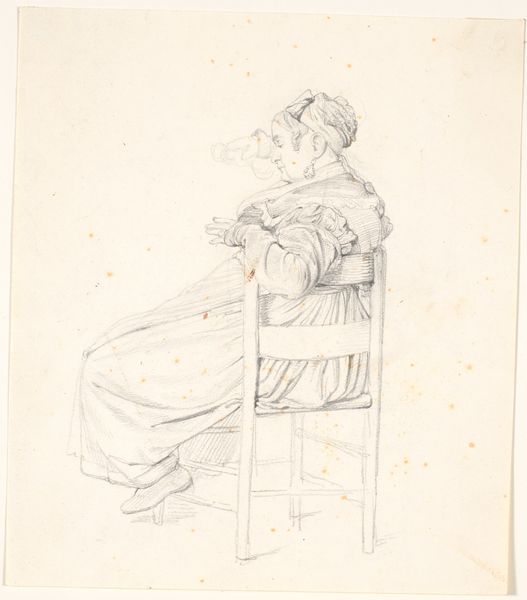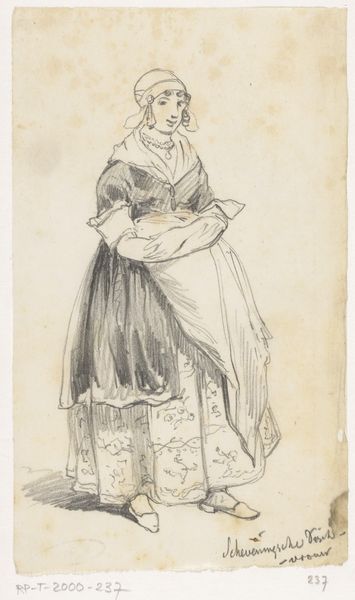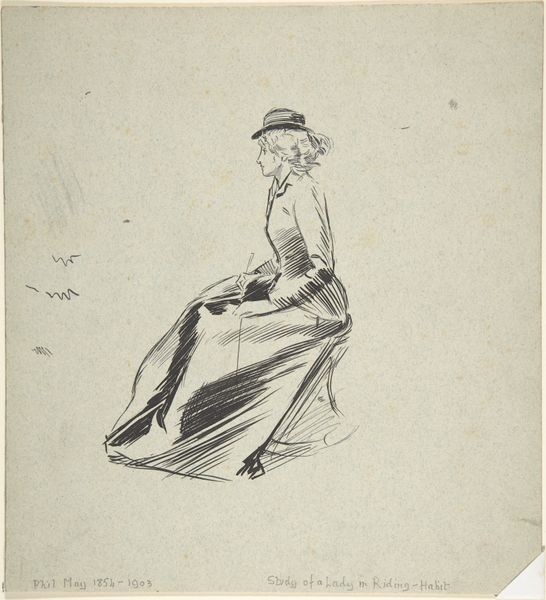
Karikatur af en stærkt pyntet dame, siddende i en lænestol, i profil til venstre 1743 - 1809
0:00
0:00
drawing
#
portrait
#
drawing
#
neoclacissism
#
ink drawing
#
academic-art
Dimensions: 239 mm (height) x 190 mm (width) (bladmaal)
Editor: This is an ink drawing by Nicolai Abildgaard, created sometime between 1743 and 1809. It's a caricature of a richly adorned woman sitting in a chair, facing left. What strikes me is how the artist highlights certain features, like her nose, perhaps to make a statement. What do you see in this piece? Curator: What I find particularly compelling about this caricature is its potential to critique the social performance of femininity during that era. How might we interpret this "strongly adorned" woman within the context of Neoclassical society and its expectations of women? Her exaggerated features, coupled with the meticulous details of her attire, could be read as a commentary on the artifice and constraints placed upon women. Do you think Abildgaard is simply poking fun, or is there something deeper at play? Editor: That's an interesting point. It's easy to see it as mere mockery, but situating it within its time makes me think more about societal pressures and maybe even class critique through its exaggeration. The Neoclassical period idealized certain aesthetics. Could this be challenging those ideals? Curator: Exactly. The tension between the idealized aesthetic of Neoclassicism and the reality of lived experiences, especially for women navigating patriarchal structures, becomes apparent here. Her "adornments" are not simply decorative, they are also indicative of economic power and status and the role expectations placed on the bourgeois. And that chair, such a stark piece of furniture, what's it implying? Editor: That's true. So it goes beyond personal appearance to address a larger framework of social and economic factors and constraints of social expectation. Curator: Indeed. Looking at art from this critical perspective allows us to unearth the complex intersections of identity, power, and representation, challenging the traditional art historical canon and fostering a more inclusive understanding of the past. Editor: I'm so glad you connected this artwork to larger social issues. I definitely look at the drawing differently now!
Comments
No comments
Be the first to comment and join the conversation on the ultimate creative platform.
